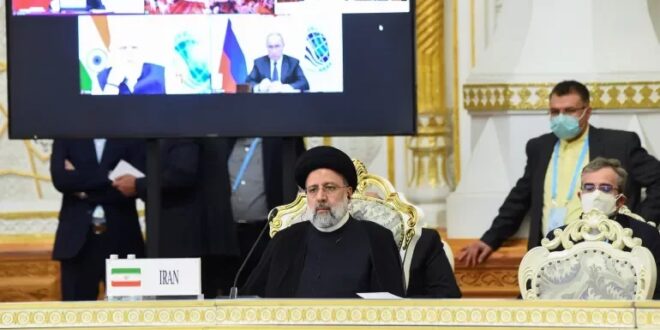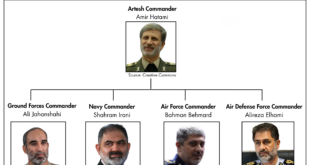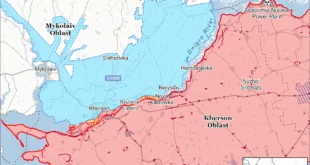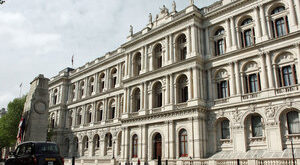On July 4, Iran officially became a full member of the Shanghai Cooperation Organization (SCO) during a virtual summit hosted by India for the SCO Heads of State Council (Shargh Daily, July 4). Iran initially joined as an “observer member without voting rights” at the July 2005 summit in Astana and, after 16 years, was accepted as the ninth member of the SCO at the September 2021 summit in Dushanbe, Tajikistan (Al Jazeera, September 17, 2021). Since then, Iran has received parliamentary approval for membership documents and protocols from the Islamic Consultative Assembly and submitted the necessary documents to the Secretariat of the SCO.
Iran’s membership in the SCO marks the country’s first foray into a regional organization with a defense and security function since its withdrawal from the Central Treaty Organization (CENTO) in 1979. This development with have a number of consequences in different areas—one of the most significant being its impact on the security arrangements in Central Asia.
In truth, the region has been a significant area of focus for the SCO’s security missions over the past two decades. The SCO has adopted a non-interventionist approach to regional and international crises such as those in Georgia, Ukraine and Syria, in which the Russian Federation, a founding member of the SCO, has directly intervened with its military (Un.org, accessed July 11). Additionally, the SCO has taken a passive approach to developments in Afghanistan, especially since the Taliban came back to power. Yet, despite Iran’s membership as a strategically important country in the Middle East, Central Asia will likely remain the primary focus of the SCO’s goals and objectives in the near future.
In this regard, it is critical to understand the main potential implications of Iranian membership for Central Asia. First, in the region, Iran shares a land border with only Turkmenistan, a country that has refused to be a member of many regional organizations, including the SCO, for the past three decades due to its “permanent neutrality” stance on foreign policy. Iran lacks a geographic and territorial connection with the other four Central Asian states—Kazakhstan, Kyrgyzstan, Uzbekistan and Tajikistan—which reduces Tehran’s direct access to the region. Nevertheless, as Iran deepens its defense and security cooperation with these four SCO members, the possibility is growing that such an expansion in regional influence could bring Tehran and Ashgabat closer together. This is especially hopeful as the two sides recently resolved the gas tensions that had been plaguing bilateral relations for the past two years (Special Eurasia, June 4).
Second, while Iran may perceive or wish to see the SCO as a “club of revisionist states,” an “Eastern Bloc,” a “concert of non-Western great powers,” a “New Warsaw Pact,” or an “Eastern NATO” that opposes the United States and the collective West, overall, the SCO is mainly a regional organization that is generally externally focused in its declarations and statements but internally focused in its practices and actions (Business Today, July 4). Additionally, Central Asian countries such as Kazakhstan, Uzbekistan and Kyrgyzstan enjoy military and security cooperation with NATO and the US. Fyodor Lukyanov, the editor-in-chief of Russia in Global Affairs, emphasized in a recent article that “the SCO has no prerequisites for becoming anti-NATO because, of the member countries of the organization, only Russia and Iran are in acute conflict with the West” (Publico.ru, July 4). Therefore, Iranian membership in the SCO is unlikely to enflame and deepen any anti-West sentiments in Central Asia.
Third, Iran’s membership in the SCO provides a basis for the country’s participation in joint military maneuvers with the Central Asian members, as well as with Russia for the first time since the Soviet Union’s collapse. In particular, Iran will be able to participate in the SCO’s “Peace Mission Exercise,” which comprises various counterterrorism exercises that have been held since 2014 (Xinhua, November 16, 2021). These drills will be held in Russia’s Central Military District in the Chelyabinsk region of the Urals in August 2023, and military delegations from Belarus, Iran, Pakistan, Kyrgyzstan, China, Kazakhstan, India, Tajikistan and Uzbekistan have already arrived in Yekaterinburg for the first round of staff negotiations on preparing the drills (TASS, December 13, 2022). This marks a new evolution in Tehran’s approach to defense, strengthening its military and security ties with Central Asia, as well as Russia and China.
Fourth, quite possibly the most important institutional platform for Iran’s security and military cooperation will be the Regional Anti-Terrorism Structure of the SCO, which was formed in accordance with Article 10 of the SCO’s charter (Sectsco.org, accessed July 11). This structure can provide a diverse range of security and military cooperation for Iran in dealing with terrorism, religious extremism, arms and drug trafficking, as well as cyber threats. One important result of this cooperation could be a more coordinated response from Iran and the Central Asian countries to the threats emanating from Afghanistan following the Taliban’s takeover.
Fifth, Iran’s right to vote in the SCO allows the country to participate in the consensus-based voting mechanism outlined in Article 16 of the SCO’s charter, which includes the process of recognizing, or not recognizing, radical Islamic groups in Central Asia, China and Russia as terrorist organizations. While Iran has had close relations and cooperation with the Islamic Renaissance Party of Tajikistan (IRPT), it has opposed other groups such as Hizb al-Tahrir and the Islamic Movement of Uzbekistan. Thus, Iranian membership will provide the possibility to prevent the IRPT from being identified as a terrorist group, which the Tajikistan government has strongly pursued since the events of September 2015 (Al Jazeera, November 5, 2015).
Sixth, and potentially the most consequential, Iran’s membership provides an opportunity for the country to expand its arms exports, particularly drones, to the Central Asian states. The opening of the Ababil-2 drone factory in Dushanbe in May 2020 demonstrated Tehran’s capacity in this regard (Tasnim News, May 17). These expanded opportunities for exports is one of the most significant results to come out of the lifting of Iran’s arms embargo, which came as a result of United Nations Security Council Resolution 2231 (July 2015) endorsing the Joint Comprehensive Plan of Action on the Iranian nuclear program. All restrictions on the supplies of major arms to and from Iran expired in October 2020 (see EDM, June 14, 2022). This means Tehran is now legally able to buy and sell conventional weaponry, including small arms, missiles, helicopters and tanks (Al Jazeera, October 17, 2020). Thus, Iran’s membership in the SCO and its greater role in the security arrangements of Central Asia could position the Islamic republic as a serious competitor for Turkey, which has sold various drones, including Bayraktar TB-2 combat drones and Anka-S drones to Kyrgyzstan and Kazakhstan, among others, in recent years.
And as the influence of other regional security structures, such as the Collective Security Treaty Organization (CSTO), continue to wane, Iran will have ever-more opportunities to deepen its security influence and cooperation with the countries of Central Asia.
 Eurasia Press & News
Eurasia Press & News




